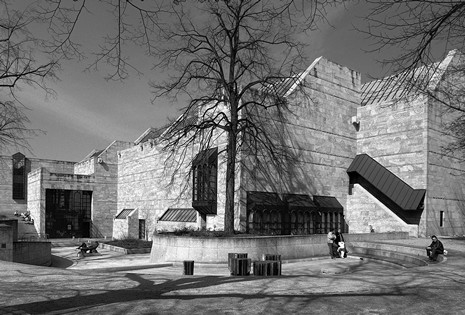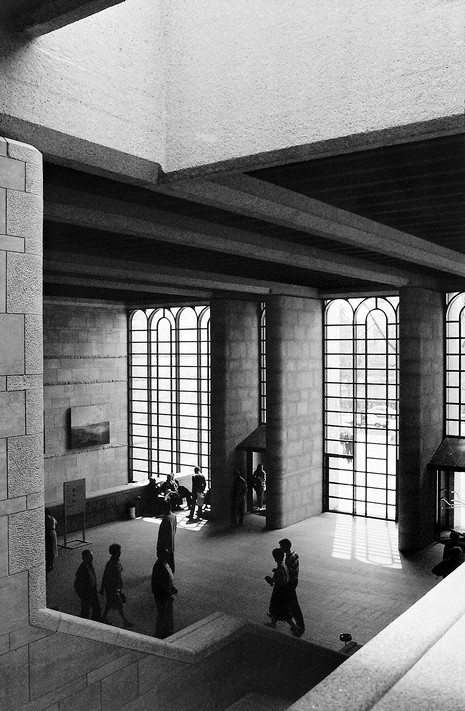Description
The nineteenth century stocks that were rescued, along with those of modern art and the graphic collection of the Bayerische Staatsgemäldesammlungen were to be united in a Neue Pinakothek that was to replace the destroyed counterpart to Klenze’s Alte Pinakothek. The design of Alexander von Branca from Munich was the one that was selected, among other reasons, because of his “balanced height development and [the way he] positioned [his building] on the complex and in relation to the Alte Pinakothek.” A programmatic change with far-reaching consequences – instead of twentieth century art and graphics, extensive administrative and institutional facilities were to be accommodated – resulted in the building´s current appearance.
The administrative wing laid out to the west is distinguished by rows of round-arched windows between wall projections with rounded off front ends. In the eastern half, in the museum part identifiable through its sawtooth roofs, this uniform, small-scale articulation is contrasted with large wall surfaces and cubic blocks. Because of the natural stone cladding, the impression that is initially generated is one of pathos-evoking detachment, which, however, is alienated by the occasionally entirely unmotivated details like copper oriels or functionless gargoyles; it hardly allows any conclusions to be drawn as to the function and importance of this building.
The interior of the museum, which is accessed via an entrance hall of gloomy solemnity, the interface between the administration part and the exhibition area, is laid out approximately on the ground plan of a figure eight on its side, around two richly styled interior courtyards. Around these courtyards surrounded by wheelchair-accessible but bunker-like ramps are 35 exhibition rooms of different sizes, each with additional cabinets, arranged so that they rise step by step; the first half of a circular tour (from which visitors can deviate at will) thus ends on the gallery of the entrance hall and subsequently leads back to the entrance level. Through historicizing mouldings on frames, doors and ceiling vaults and fabric-covered walls in discreet colours, the comfortably proportioned exhibition rooms, perfectly illuminated by complicatedly filtered top lighting, are, in a way, transported back to the time when the pictures shown here came into being.
Der Architekt 9/1980, pp. 420-426 (Dieter Osterlen) • Baumeister 10/1981, pp. 1001-1009 • The Architectural Review 169/1981, pp. 334-340 • Festgabe zur Eröffnung der Neuen Pinakothek in München am 28. März 1981, Munich, 1981 • Bauwelt 19-20 /1981, pp. 783-794 • Pantheon 39/1981, pp. 104-110 • deutsche bauzeitung 1/1982, pp. 30-32 (Gerhard Ullmann) • Museumskunde 47/1982, pp. 26-39 (Norbert Knopp) • Ingeborg Flagge (ed.), Museumsarchitektur, 1985, pp. 20-22 • Michael Künne, Die Neue Pinakothek. Photographisch erlebte Architektur, Munich, 1985 • Hannelore Schubert, Moderner Museumsbau, Stuttgart, 1986, pp. 130-133 • Heinrich Klotz/Waltraud Krase, New Museums, London, 1986, pp. 24-26 and pp. 44-48 • Jost Schilgen, Neue Häuser für die Kunst, Dortmund, 1990, pp. 8-25
Drawings
Site plan
Ground floor (Entrance and hall level)
Second floor (exhibition level)
Section AA
Section BB
Photos

View from the southeast

View of the entrance hall
Originally published in: Paul von Naredi-Rainer, Museum Buildings: A Design Manual, Birkhäuser, 2004.